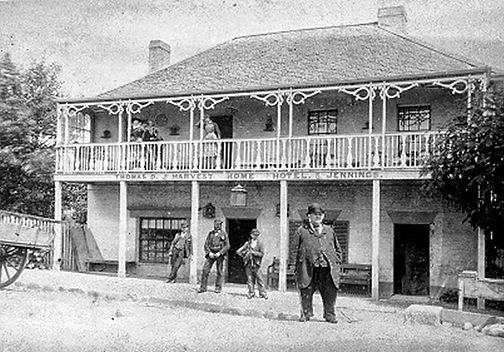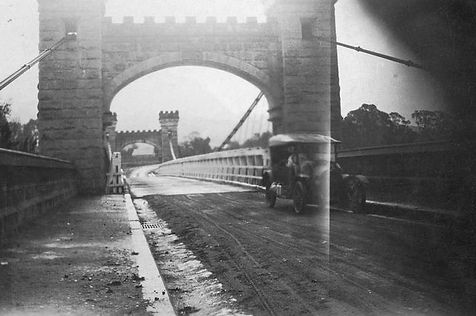A LITTLE BIT OF HISTORY ...
The first inhabitants of Kangaroo Valley were the Australian Aboriginal Wodi-Wodi people, who had reportedly occupied the land for around 20,000 years before the European settlement of Australia in 1788. An 1826 census indicated 79 Aborigines lived in the valley.



The first recorded European sighting of the valley was in April 1812, when surveyor-explorer George Evans passed through the area as he travelled north from his exploration of Jervis Bay. Evans reportedly claimed that the valley offered a view that "no painter could beautify."
The area was first settled in 1817 when Charles Throsby, an explorer, and Captain Richard Brooks, a cattleman, opened the area for white settlement. The felling and exporting of cedar trees quickly became the main industry in Kangaroo Valley. By the mid-1840s, a number of dairy farmers made the region their home, specialising in the production of butter as other dairy products such as milk couldn't be exported as they would often curdle long before they had completed the treacherous journey out of Kangaroo Valley to neighbouring settlements.
The area was first settled in 1817 when Charles Throsby, an explorer, and Captain Richard Brooks, a cattleman, opened the area for white settlement. The felling and exporting of cedar trees quickly became the main industry in Kangaroo Valley. By the mid-1840s, a number of dairy farmers made the region their home, specialising in the production of butter as other dairy products such as milk couldn't be exported as they would often curdle long before they had completed the treacherous journey out of Kangaroo Valley to neighbouring settlements.


By the 1870s, activity had begun to concentrate in the area that is now the village, as other centres in Kangaroo Valley, such as Trendally, died with the dairy industry in the region. Both the Church of the Good Shepherd (built in 1870–72) and rectory (built in 1879 by John Tanner) were designed by John Horbury Hunt, and are listed on the Register of the National Estate.
The local public school was built in 1884 of local sandstone. Further additions constructed of weatherboard and brick were made later. The local courthouse was built c.1910, also of local sandstone. The design is asymmetrical and features a sloping buttress and arch. The main buildings include a residence and lock-up as well as the courthouse itself. Alterations and extensions have taken place over the years. The local school and the courthouse are both listed on the Register of the National Estate.


The valley has changed very little in the past 130 years with reminders such as the Hampden Bridge, completed in 1898, and the oldest suspension bridge in Australia, and old Barrengarry School serving as a testimony to the past when Kangaroo Valley was home to a flourishing dairy industry. Agriculture still exists, though other industries such as tourism and outdoor recreation have since taken over as the primary source of income.
